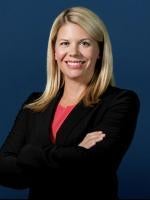Two of the busiest airports in the United States are battling with their smaller counterparts to retain trademark rights in the name of the major cities the airports serve. While the smaller airports want to capitalize on using big city names, the federal trademark-holding larger airports are fighting hard to prevent that, arguing it will sow confusion among travelers. These cases highlight the importance of considering whether an applicant’s proposed mark may be confusingly similar with existing registrations.
San Francisco International Airport and San Francisco Bay Oakland International Airport
On April 18, 2024, the San Francisco International Airport (“SFO”) filed a federal trademark infringement lawsuit to stop the City of Oakland from renaming the Oakland International Airport to “San Francisco Bay Oakland International Airport.” SFO’s lawsuit is predicated on a U.S. federally registered word mark for SAN FRANCISCO INTERNATIONAL AIRPORT in class 39 for airport services. (U.S. Reg. No. 4,189,396). A central issue in this litigation, should it proceed beyond initial filings, will be whether or not SFO can monopolize the geographic location “San Francisco Bay” and whether the two names are confusingly similar.
Orlando International Airport and Orlando Sanford International Airport
The Greater Orlando Aviation Authority (“GOAA”) operates the Orlando International Airport, and the Sanford Airport Authority (“SAA”) runs the smaller Orlando Sanford International Airport. In 1989, GOAA applied for and was subsequently granted a federal trademark registration for the logo shown below. In 2016, SAA filed a trademark application for its own logo also shown below. According to SAA, it had been using the name Orlando Sanford International Airport for decades.
| GOAA Reg. No. 1565079 | SAA Trademark Application |
 |
 |
The USPTO initially refused SAA’s mark on the grounds it was primarily geographically descriptive. Section 2(e)(2) of the Trademark Act, 15 U.S.C. §1052(e)(2) explicitly prohibits the registration of trademarks on the Principal Register if the trademark is “primarily geographically descriptive” of the goods or services specified in the trademark application.
In response to this rejection, SAA argued that the mark had acquired distinctiveness. In support of that argument, SAA attached a Wikipedia page for the airport and factsheet with the economic impact of the airport. The Examiner allowed the application without further comment. But GOAA formally opposed the SAA’s trademark application, arguing a likelihood of confusion did exist.
After more than five years of litigation, the Trademark Trial and Appeal Board (“TTAB”) found that the marks were confusingly similar in a 60-page nonprecedential opinion. Interestingly, the TTAB found that “[t]he presence of the geographically descriptive term SANFORD does not distinguish the marks because Sanford is in such close proximity to Orlando, as the parties' airports are only thirty-one miles apart.” Greater Orlando Aviation Auth., No. Greater Orlando Aviation Auth., 91234602, 2023 WL 2534970, at *18 (Mar. 14, 2023). Even though SAA was able to overcome the Examiner’s rejection that the mark was “primarily geographically descriptive,” SAA was unable to argue that a “primarily geographically descriptive” word included in the mark rendered the marks dissimilar.
But SAA was not ready to admit defeat and filed an action in the United States District Court for the Middle District of Florida seeking a declaratory judgment of non-infringement and invalidity of GOAA’s mark. GOAA counterclaimed for trademark infringement. The case remains pending and is scheduled for mediation in June 2024 and trial in March 2025.
This case highlights the importance for trademark applicants to consider likelihood of confusion separate and apart from the USPTO’s approval of a trademark application. Here, the USPTO found no conflicting marks, and allowed SAA’s application to proceed to publication, yet the TTAB prevented registration finding SAA could not rely on the presence of geographically descriptive words to establish meaningful differences between the marks. While a party may be able to overcome a primarily geographically descriptive rejection by a simple verified statement under 15 U.S.C § 1052(f), complications from use of the mark may still be present. It is important to consider whether the proposed mark will cause a likelihood of confusion with any other marks without consideration to whether descriptive terms differentiate the two.
As of the date of this post, there are nearly four million marks on the USPTO’s principal register, and the USPTO has taken a stricter approach when examining applications in an effort to crackdown on fraudulent foreign filings. Proper availability searching, trademark monitoring of competitor applications, and use of opposition proceedings are vital tools in the pursuit and defense of trademark.





 />i
/>i
